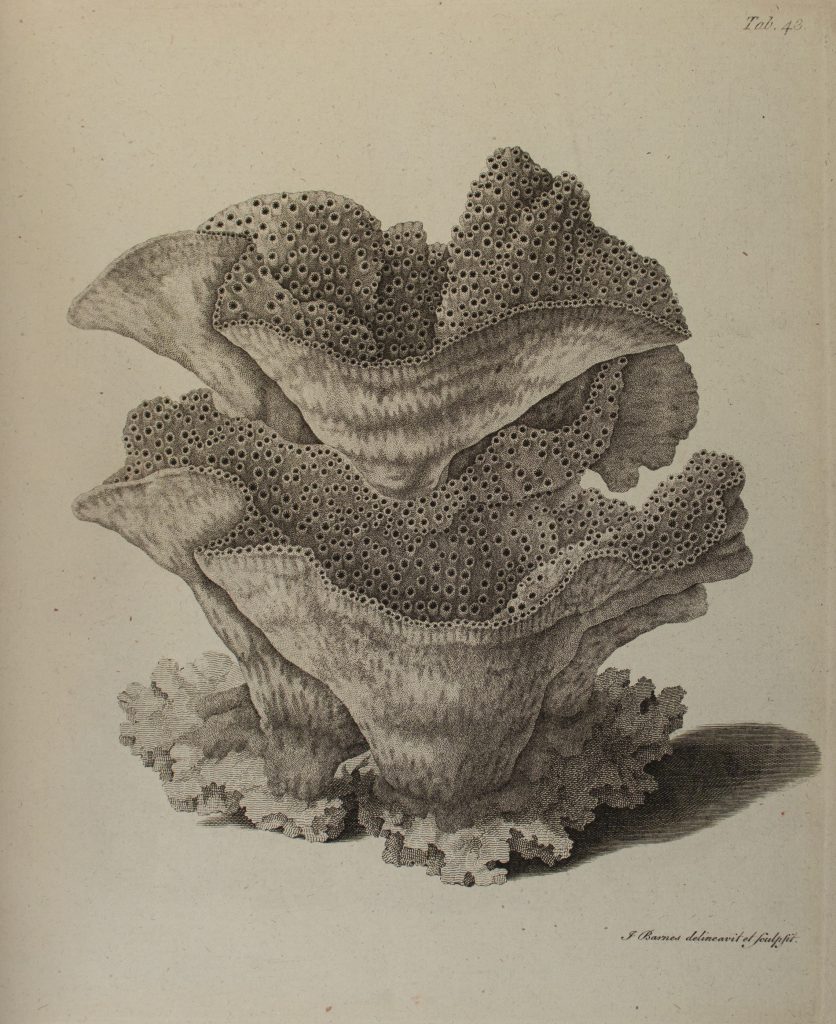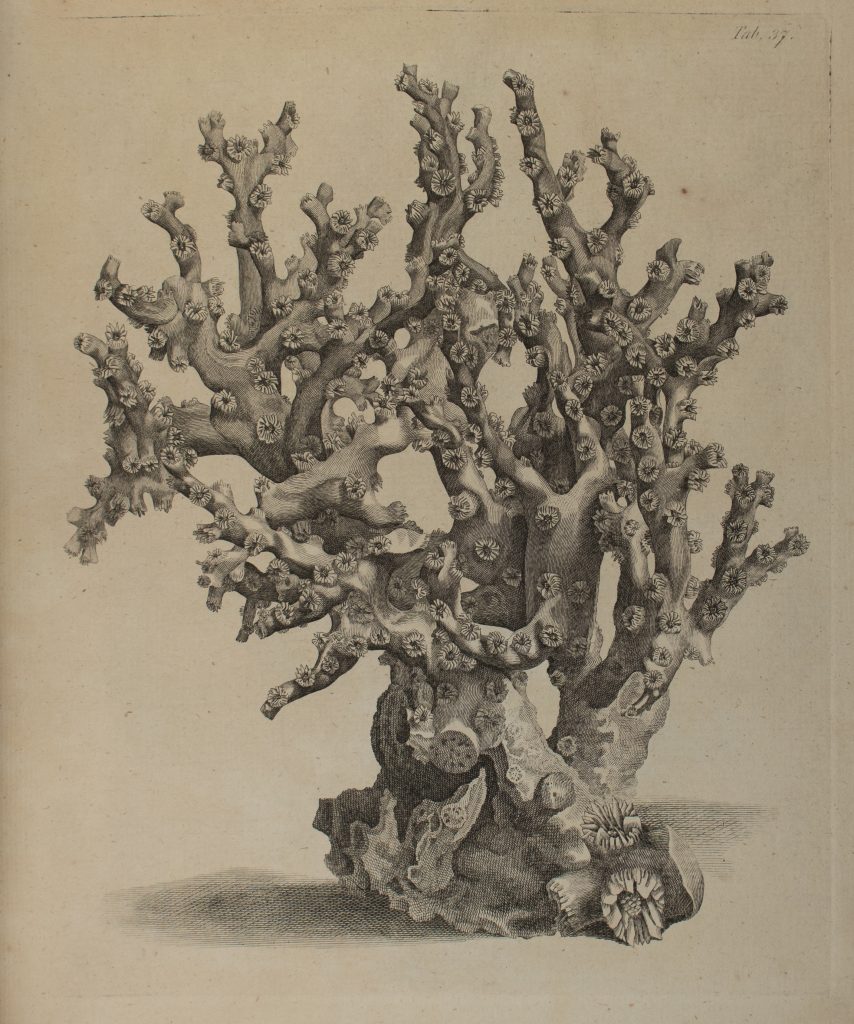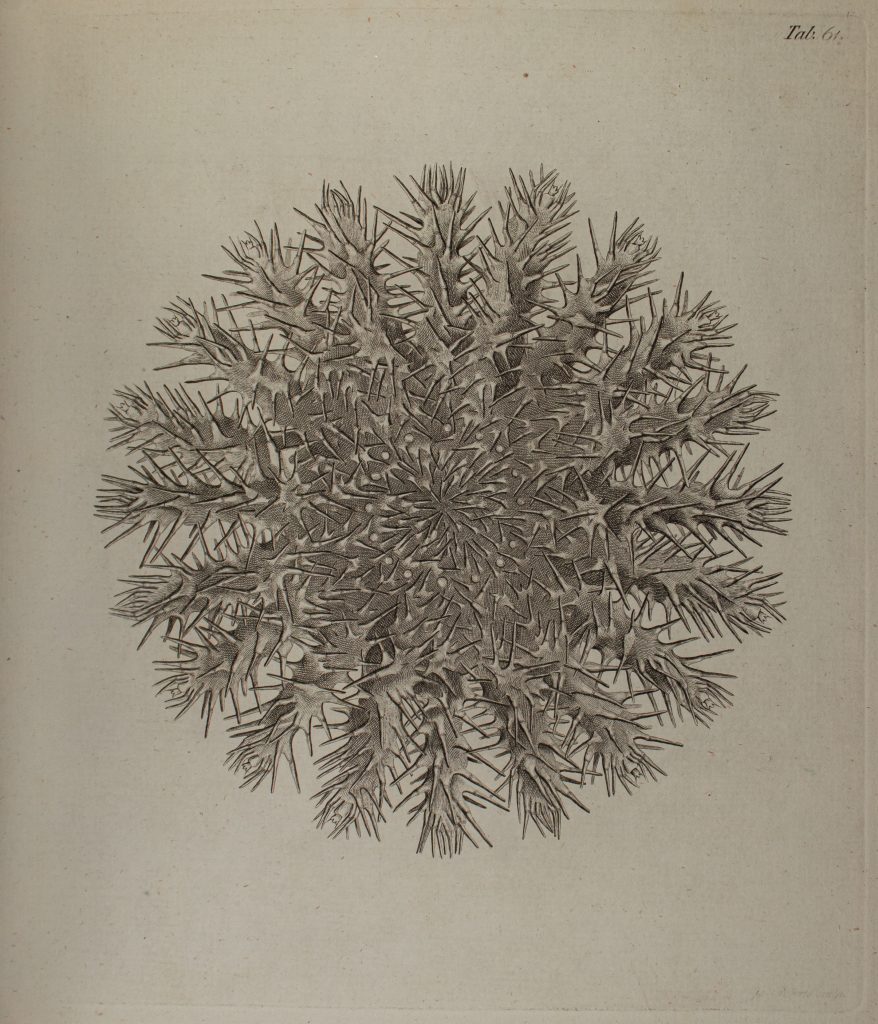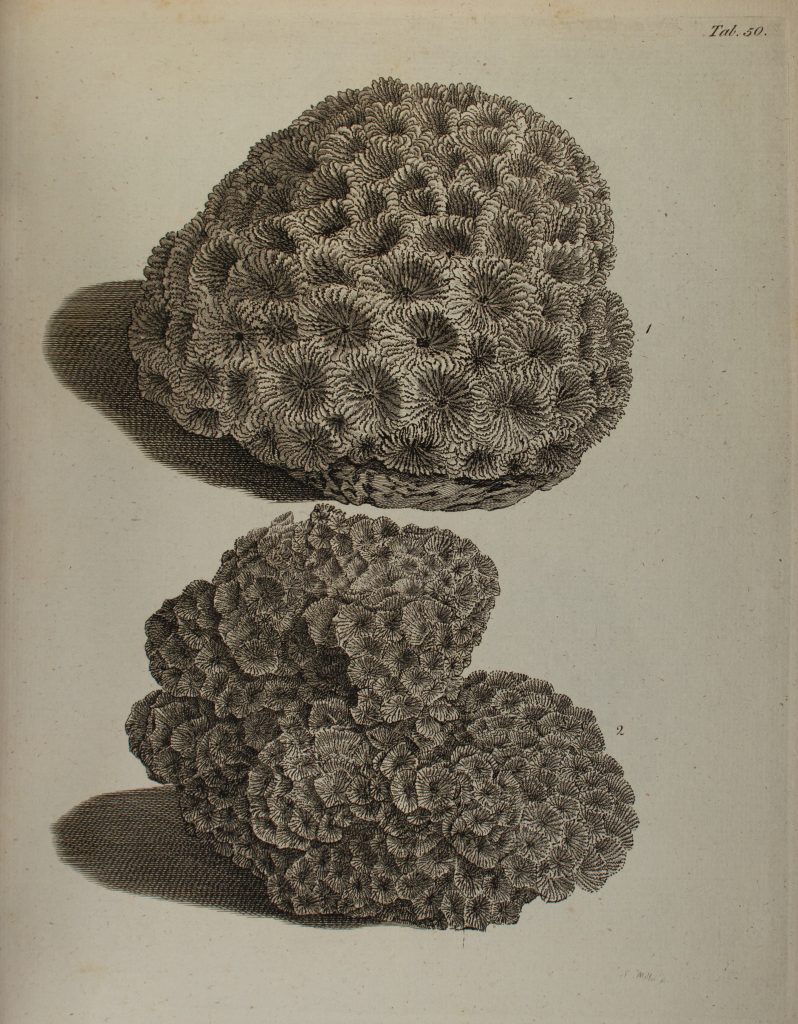11 Ellis and Solander’s Natural History of Many Curious and Uncommon Zoophytes
Suzie Davies
About the Authors
John Ellis was recognised as the first modern marine biologist and won a number of prizes from the Royal Society during his life. The natural history of many curious and uncommon zoophytes clearly and finally established the animal nature of marine animals such as corals, gorgonians and starfish; permanently separating them from the taxonomy of marine plants. The work clearly identified the topic of marine zoology and also laid the foundation for accurate marine botany in England.

Daniel Solander is widely known as the botanist who accompanied Sir Joseph Banks on James Cook’s first voyage of discovery on the Endeavour.[1] He inspired the naming of Botanist Bay (later to become Botany Bay). Unfortunately, Solander died quite young, but he still produced a series of major groundbreaking publications emanating out of the scientific collections from his numerous voyages. Solander and Ellis undertook many scientific collaborations during their lives, publishing major works at the Royal Society. Both John Ellis and Daniel Solander were greatly regarded by a giant of eighteenth century science, Carl Linnaeus. This regard is clearly shown in the 1758 compliment Linnaeus paid Ellis:
You in these minute and almost invisible beings, have acquired a more lasting name than any heroes and kings by their cruel murders and bloody battles. I congratulate you on this, your own stupendous victory, over the barbarous ignorance which hitherto has held the philosophic world in subjection.[2]

About the Book
From its first publication, The natural history of many curious and uncommon zoophytes set a new standard in taxonomic excellence, and went on to become a standard work in many branches of taxonomic zoology and botany for the next two hundred years.[3] The book was one of the first fruits to flow from the establishment of the world-famous British Museum. The natural history of many curious and uncommon zoophytes was the last major work authored by both Ellis and Solander, with neither scientist living to see the completed publication. It was finally published by Ellis’s daughter, Martha Watt with the financial support of Sir Joseph Banks in 1786.[4] The book begins with a sincere dedication by Watt to Sir Joseph Banks:
President of the Royal Society, the liberal patron of science, and the enlightened cultivator of natural knowledge … inscribed by his most obedient and much obliged servant, the daughter of the author, Martha Watt.

A feature of the work is its 63 exquisitely-engraved plates. It includes possibly the first recorded illustration of the crown-of-thorns starfish (Acanthaster planci), then known as Asterias echinites.[5] Almost exactly 200 years later, this particular illustration was used as the logo for a range of publications coming out of the 1985 Crown-of-Thorns Study undertaken by AIMS, based in Townsville, North Queensland.

The publications recorded the scientific and administrative results of the Crown of Thorns Study, as well as the biology and ecology of the crown-of-thorns starfish. Twelve monographs were published in the series Crown-of-thorns study report. The publication Crown-of-thorns starfish: questions and answers by Peter Moran provided answers to commonly asked questions about the starfish, presenting scientifically accurate information in an easily accessible style. The full colour publication proudly displayed Ellis’s illustration on the front cover.[6]
A major scientific review of the starfish, The Acanthaster phenomenon by Peter Moran, was published in Oceanography and Marine Biology: An Annual Review, Volume 24, pages 379-480.[7] This work then ‘spawned’ separate monographs such as Acanthaster planci: An annotated bibliography by Peter Moran and Suzie Davies.[8] The bibliography contained the full citations of the previously published review, as well as additional material. Three editions of this work were published as part of the Crown-of-Thorns Study, and all showed Ellis’s starfish illustration on the front cover. Moran’s major review was republished in 1988 as The Acanthaster phenomenon (Volume 7 of the Monograph Series by the Australian Institute of Marine Science). This volume contained the previously published works.[9]
Ellis’s excellent book and its finely engraved illustrations of the crown-of-thorns starfish were first identified by Inara Bush, the AIMS librarian, as she diligently worked through the book stock of the recently arrived Sir Maurice Yonge collection during 1983.
- “Daniel Solander,” Wikipedia, accessed March 22, 2018, https://en.wikipedia.org/w/index.php?title=Daniel_Solander&oldid=822120273.; Roy Anthony Rauschenberg, “Daniel Carl Solander: Naturalist on the ‘Endeavour,’” Transactions of the American Philosophical Society 58, no. 8 (1968): 1-66, https://doi.org/10.2307/1006027. . ↵
 Roy Anthony Rauschenberg, “John Ellis, F.R.S.: Eighteenth Century Naturalist and Royal Agent to West Florida,” Notes and Records of the Royal Society of London 32, no. 2 (1978): 150, https://www.jstor.org/stable/531725. ↵
Roy Anthony Rauschenberg, “John Ellis, F.R.S.: Eighteenth Century Naturalist and Royal Agent to West Florida,” Notes and Records of the Royal Society of London 32, no. 2 (1978): 150, https://www.jstor.org/stable/531725. ↵- Paul F. S. Cornelius, and John W. Wells, “Ellis & Solander’s ‘Zoophytes’, 1786: Six Unpublished Plates and Other Aspects, Bulletin of the British Museum (Natural History) Historical Series 16, no. 1 (1988): 17-87, https://www.biodiversitylibrary.org/item/19488#page/133/mode/1up. ↵
- Roy Anthony Rauschenberg, “John Ellis, Royal Agent for West Florida,” Florida Historical Quarterly, 62, no.1 (1983), Article 3, https://stars.library.ucf.edu/fhq/vol62/iss1/3/. ↵
- WoRMS Editorial Board, World Register of Marine Species, accessed September 28, 2022, https://doi.org/10.14284/170. ↵
- Peter John Moran, Crown-of-thorns Starfish: Questions and Answers (Townsville: Australian Institute of Marine Science, 1988). ↵
- Peter John Moran, The Acanthaster Phenomenon (Townsville: Australian Institute of Marine Science, 1988). ↵
- Peter John Moran and Suzie Davies, Acanthaster Planci: An Annotated Bibliography, 3rd ed. (Townsville: Australian Institute of Marine Science, 1989). ↵
- Peter John Moran, “The Acanthaster Phenomenon,” In Oceanography and Marine Biology: An Annual Review, ed. Harold Barnes (London: CRC Press, 1986) 24:379-480. ↵

